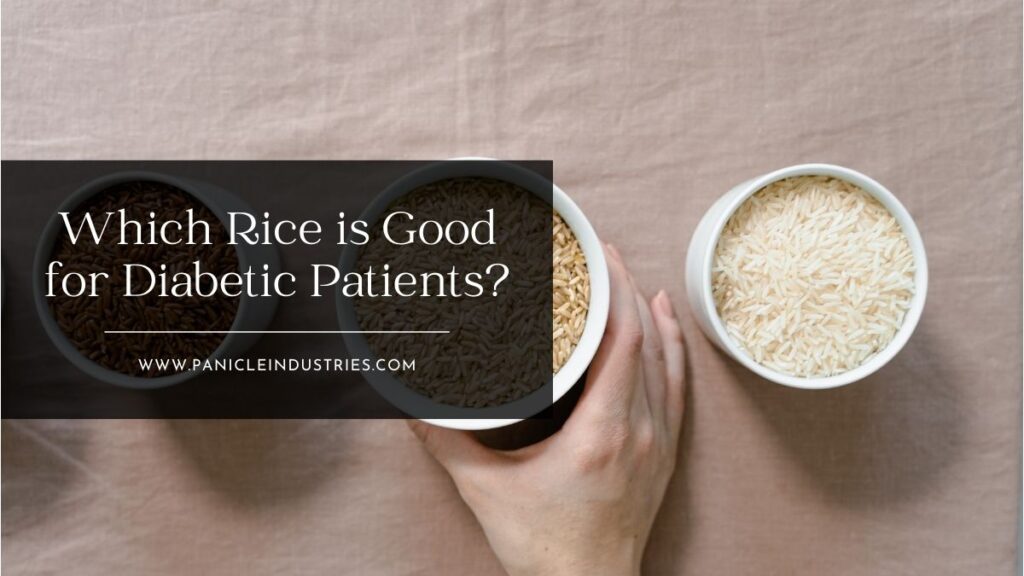Diabetes is a common health condition where managing blood sugar levels is very important. One of the biggest concerns for diabetic patients is choosing the right food, especially rice, which is a staple in many diets. But not all rice is the same. Some types of rice have a lower impact on blood sugar, making them better for diabetic patients. If you are wondering which rice is good for diabetic patients, this blog will help you understand the best options.
Let’s explore the types of rice that are suitable for people with diabetes and how they can be included in a healthy diet.
Understanding Glycemic Index (GI) in Rice
The Glycemic Index (GI) is a scale that measures how quickly a food raises blood sugar levels. Foods with a high GI cause rapid spikes, while those with a low GI release sugar slowly. For diabetic patients, choosing rice with a low GI is crucial to keep blood sugar levels stable.
The GI scale is divided into three categories:
- Low GI (55 or less): Foods in this category cause a slow rise in blood sugar. These are the best options for diabetic patients.
- Medium GI (56-69): These foods have a moderate impact on blood sugar.
- High GI (70 or more): These foods cause a rapid increase in blood sugar and should be consumed in moderation.
Rice with a low GI is always the best choice for diabetic patients.
Which Rice is Good for Diabetic Patients?
1. Brown Rice
Brown rice is one of the best choices for diabetic patients. It contains more fiber and nutrients than white rice, helping to slow down sugar absorption. The fiber in brown rice keeps you full longer and prevents blood sugar spikes. Since it is a whole grain, it also supports digestion and heart health.
2. Basmati Rice
Basmati rice, especially whole-grain or brown basmati rice, has a lower GI compared to regular white rice. It is digested slowly, which helps in controlling blood sugar levels. Basmati rice is also light and aromatic, making it a preferred choice in many households.
3. Black Rice
Black rice, also called forbidden rice, is packed with antioxidants, fiber, and nutrients. It has a lower GI and helps in reducing inflammation, which is beneficial for diabetic patients. The high amount of anthocyanins in black rice helps in fighting oxidative stress and supports overall health.
4. Red Rice
Red rice is another great option. It is rich in fiber, antioxidants, and essential minerals. The slow digestion process of red rice makes it ideal for keeping blood sugar levels stable. It also contains natural compounds that help lower cholesterol and promote heart health.
5. Wild Rice
Wild rice is high in protein, fiber, and essential nutrients. It has a lower GI than white rice, making it a healthier alternative for diabetic patients. Wild rice has a slightly chewy texture and a nutty flavor, making it a delicious addition to meals.
| If you are looking for the best rice options, check out our wide range: ✔ Premium Basmati Rice – Aromatic, long-grain rice perfect for diabetic-friendly meals. ✔ Quality Non-Basmati Rice – Nutritious and ideal for daily cooking. |
Rice to Avoid for Diabetes
While some types of rice are good for diabetes, others should be consumed in moderation.
- White Rice: Has a high GI and can cause blood sugar spikes.
- Sticky Rice: High in starch, leading to quick sugar release.
- Instant Rice: Processed rice that has a higher GI than natural rice.
White rice is polished and processed, removing most of the fiber and nutrients, which makes it less suitable for diabetic patients. If you must consume white rice, pair it with fiber-rich foods like vegetables and legumes to reduce its impact on blood sugar.
How to Eat Rice Safely with Diabetes
Even healthy rice should be eaten in moderation. Here are some tips:
- Pair with vegetables and proteins: Combining rice with vegetables, beans, or lean proteins helps slow down sugar absorption.
- Control portions: Eat small servings rather than large bowls of rice.
- Choose whole grains: Whole-grain rice varieties provide more fiber and nutrients.
- Cook rice properly: Soaking rice before cooking and cooling it after cooking can reduce its GI.
- Use brown or red rice flour for rotis and baking: Instead of white rice flour, try making rotis or baked goods using healthier rice flour options.
Other Alternatives to Rice for Diabetic Patients
If you are looking for substitutes for rice, here are some great alternatives:
- Quinoa – A high-protein grain that is rich in fiber and has a low GI.
- Barley – A whole grain that helps regulate blood sugar levels.
- Oats – A fiber-rich grain that provides long-lasting energy.
- Cauliflower Rice – A low-carb alternative to rice that is packed with vitamins.
Healthy Rice-Based Meals for Diabetic Patients
Here are some simple meal ideas:
- Brown rice with lentils and vegetables – A fiber-rich meal that keeps blood sugar stable.
- Basmati rice with grilled fish and salad – A balanced plate with protein and fiber.
- Black rice pudding with nuts and seeds – A healthy dessert option.
- Wild rice stir-fry with tofu and greens – A delicious and nutritious meal.
Conclusion
Choosing the right rice is important for managing diabetes. If you are wondering which rice is good for diabetic patients, the best options include brown rice, basmati rice, black rice, red rice, and wild rice. These varieties have a lower Glycemic Index and are rich in fiber, helping to control blood sugar levels. It is also important to watch portion sizes and pair rice with other healthy foods.
Additionally, diabetic patients can try other grains like quinoa, barley, and oats as alternatives to rice. By making smart food choices, diabetic patients can enjoy rice in a balanced and healthy way. Always consult a doctor or nutritionist for personalized advice on managing diabetes with the right diet.


